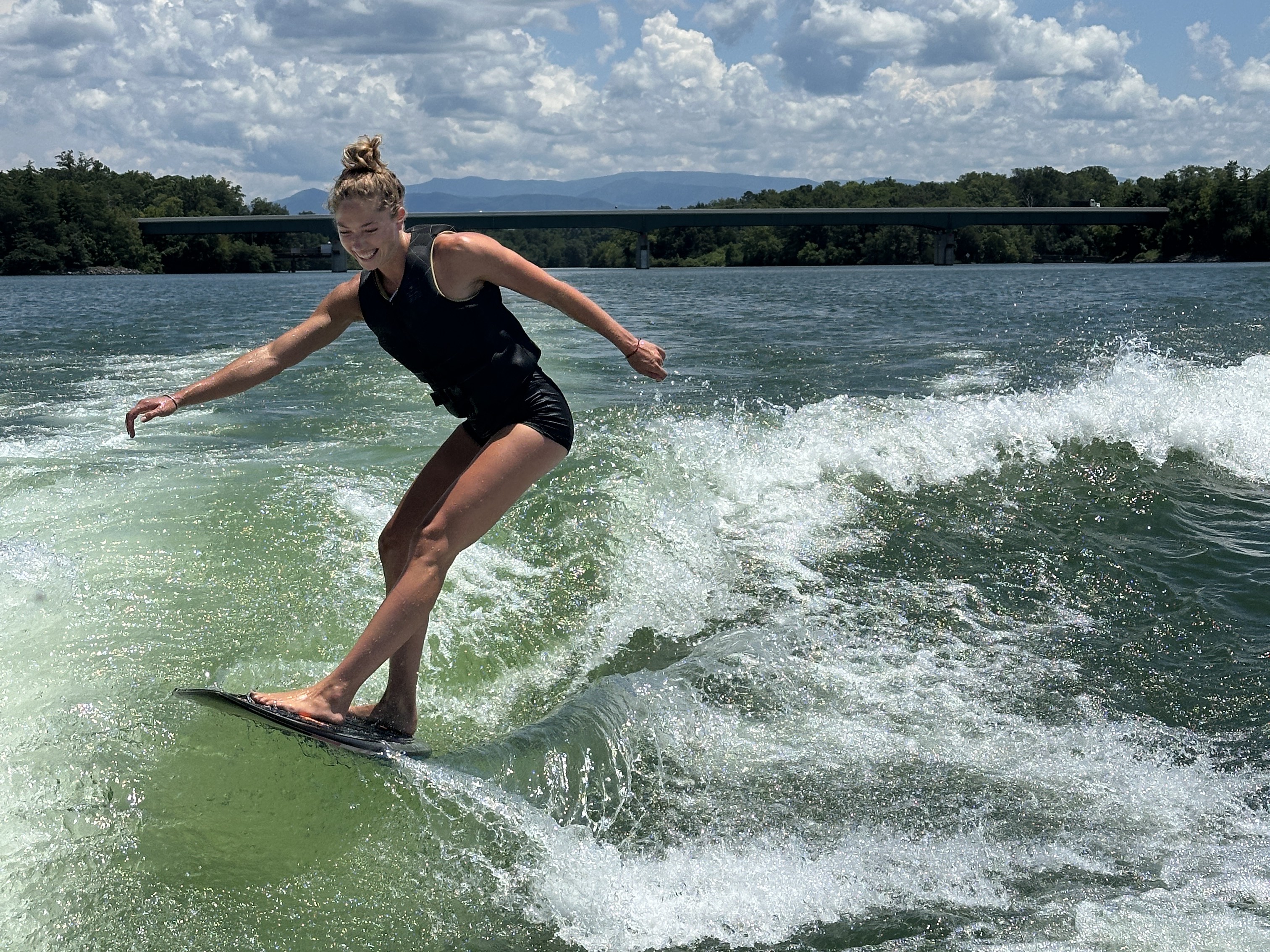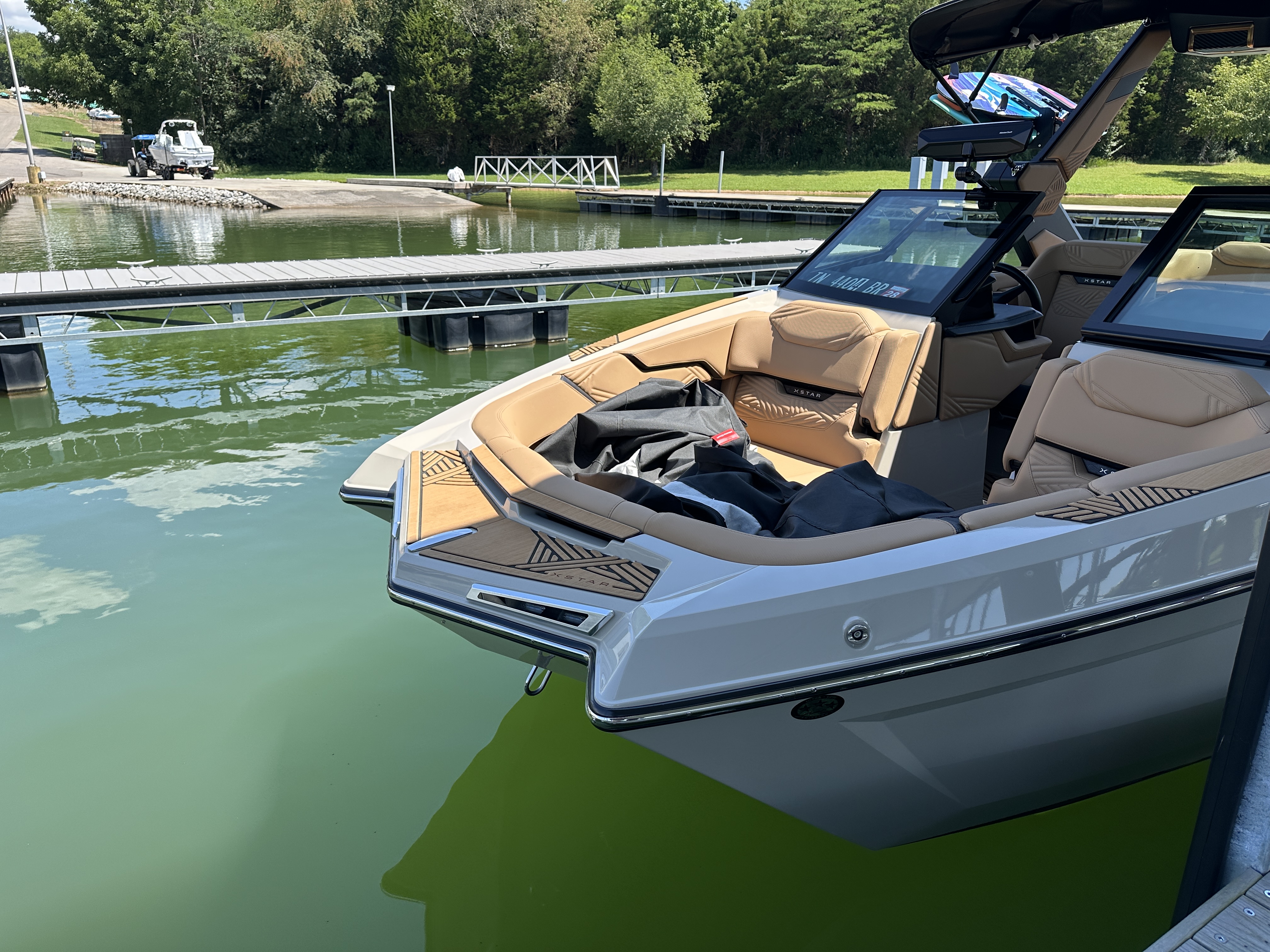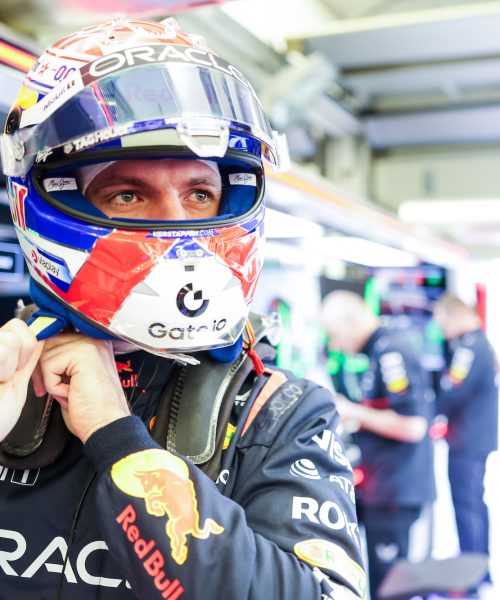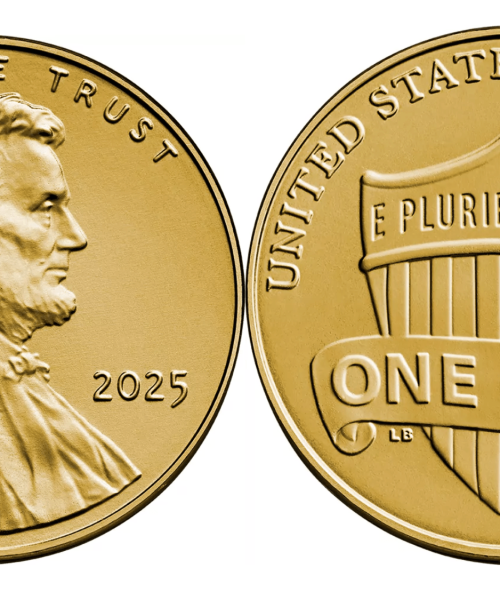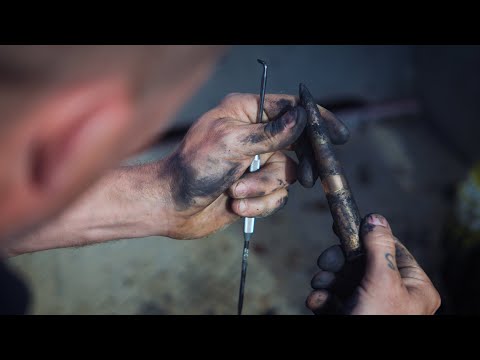Wakeboarding and wakesurfing have seen a sharp rise in popularity over the last 20 to 30 years. They’re slightly different sports, though both start with a tow rope pulled by a powerboat. When wakeboarding, the rider keeps hold of the rope, while wakesurfing allows the watersports enthusiast to surf the waves made by the boat, hands-free. Both require different kinds of wake patterns that are created by special plates installed on the stern, or the back part of the boat.
Waves for wakesurfing and wakeboarding are created by the boat’s displacement of water, and the shape and size of the waves result from the hull design, ballast (weight distribution), and MasterCraft’s digitally controlled surf systems. The boats offer a myriad of options, which the driver can quickly change on the fly on the built-in touchscreen.
Many of its boats are powered by a supercharged 6.2-liter engine made by Ilmor, which produces 630 horsepower and 665 pound-feet of torque. Ilmor is a British company known for its high-powered boat and motorsports engines, the latter of which are used in IndyCar and NASCAR races on the track. On the lake, this engine provides more than enough power to pull wakeboarders and cut through the water quickly.
The company’s boats are built from the outside in, which is the exact opposite of just about everything else. A car is painted as one of its final steps before it reaches the dealership. Furniture is assembled, then finished, stained, or painted. MasterCraft boats, however, start with its “paint”—a protective, pigmented resin-based coating called gelcoat—and proceed from there.
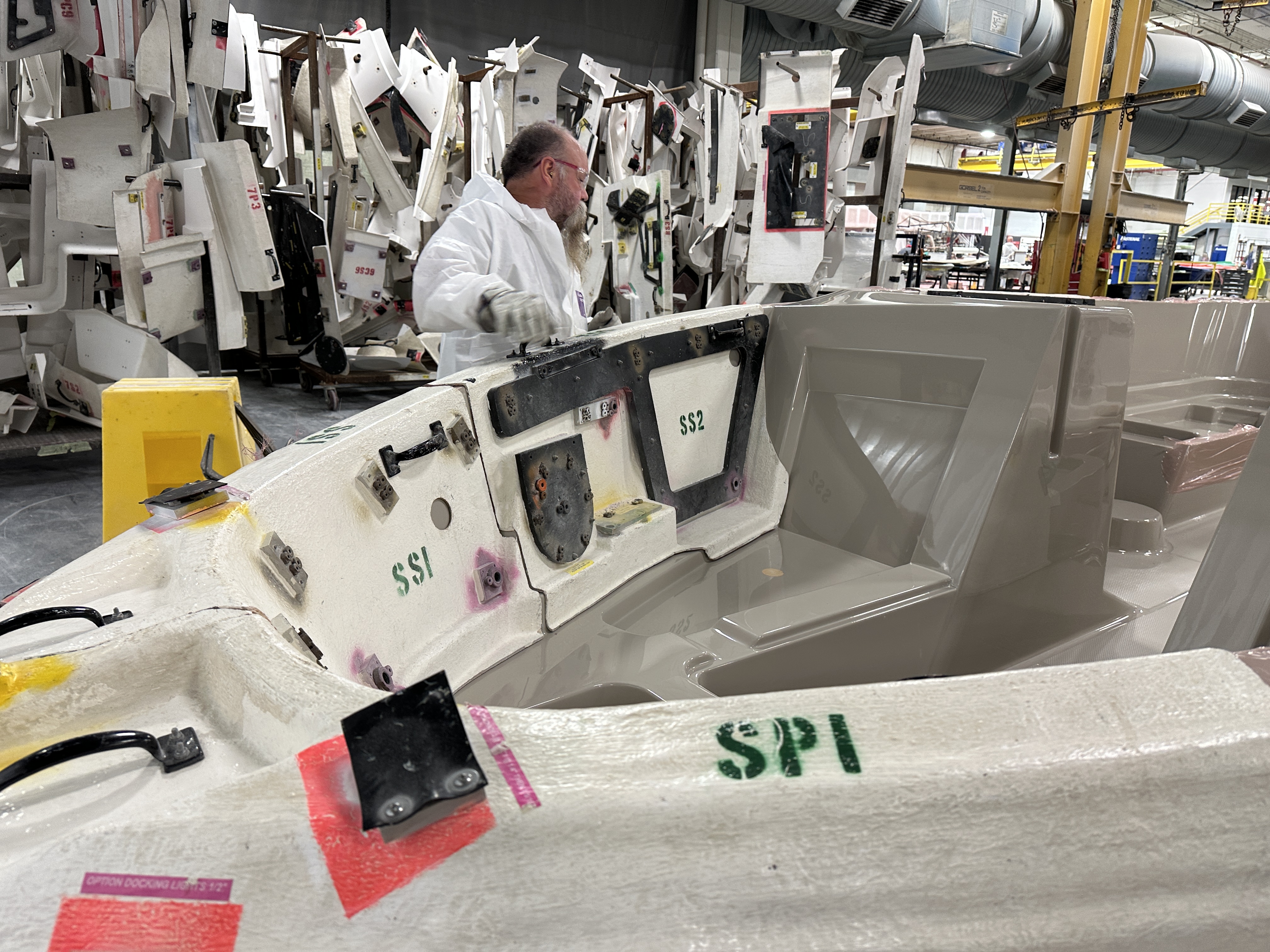
The molding process
MasterCraft has been building boats for watersports fanatics since 1968, when it built its first ski boat on a farm in Maryville, Tennessee. For three shifts per day, six days a week, workers painstakingly assemble each boat. Its factory sits on the shores of Tellico Lake, a convenient location for testing its vessels. Engineers rigorously test each boat year-round, which sounds like a dream job until you realize that this area of Tennessee gets sleet, rain, and even snow. The show must go on.
It all starts with custom molds. First, the molds are cleaned and waxed, then the staff will review the work order to understand which colors the customer wants. For more than one color, the mold is taped off much like a painter would when working on interior walls, then they paint from the ground up. Once the bottom section has cured, it’s taped off for the next color and the artisans work their way up the boat. After it’s pulled from the mold, the gelcoat adheres to the next layer of fiberglass, not the mold itself.
MasterCraft adds up to a five-degree taper to the parts to lessen friction and adherence. “Blow holes” are built into the mold for easy detachment of the final form from the mold itself. Workers push compressed air through the blow holes, which also helps to release the part.
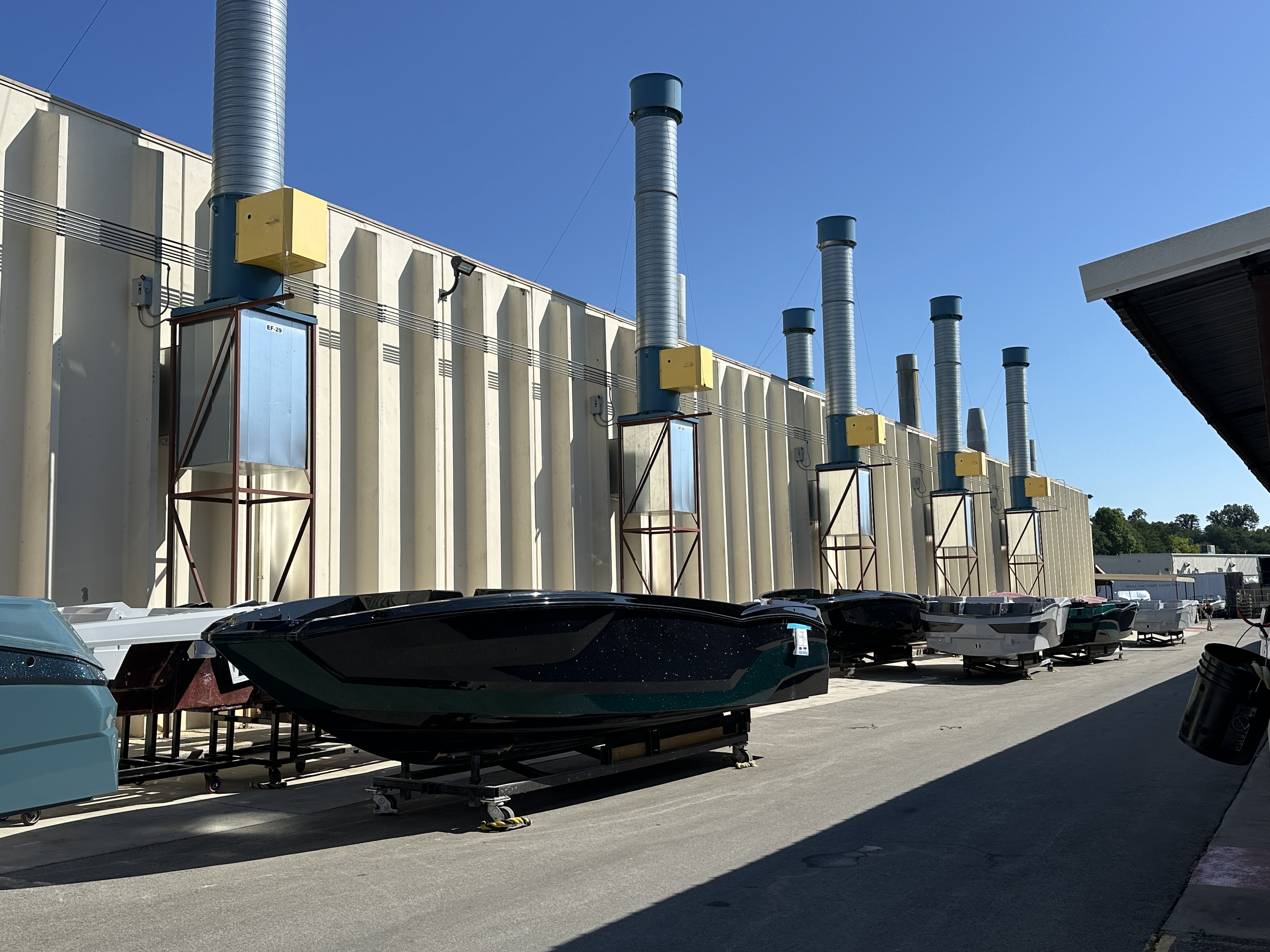
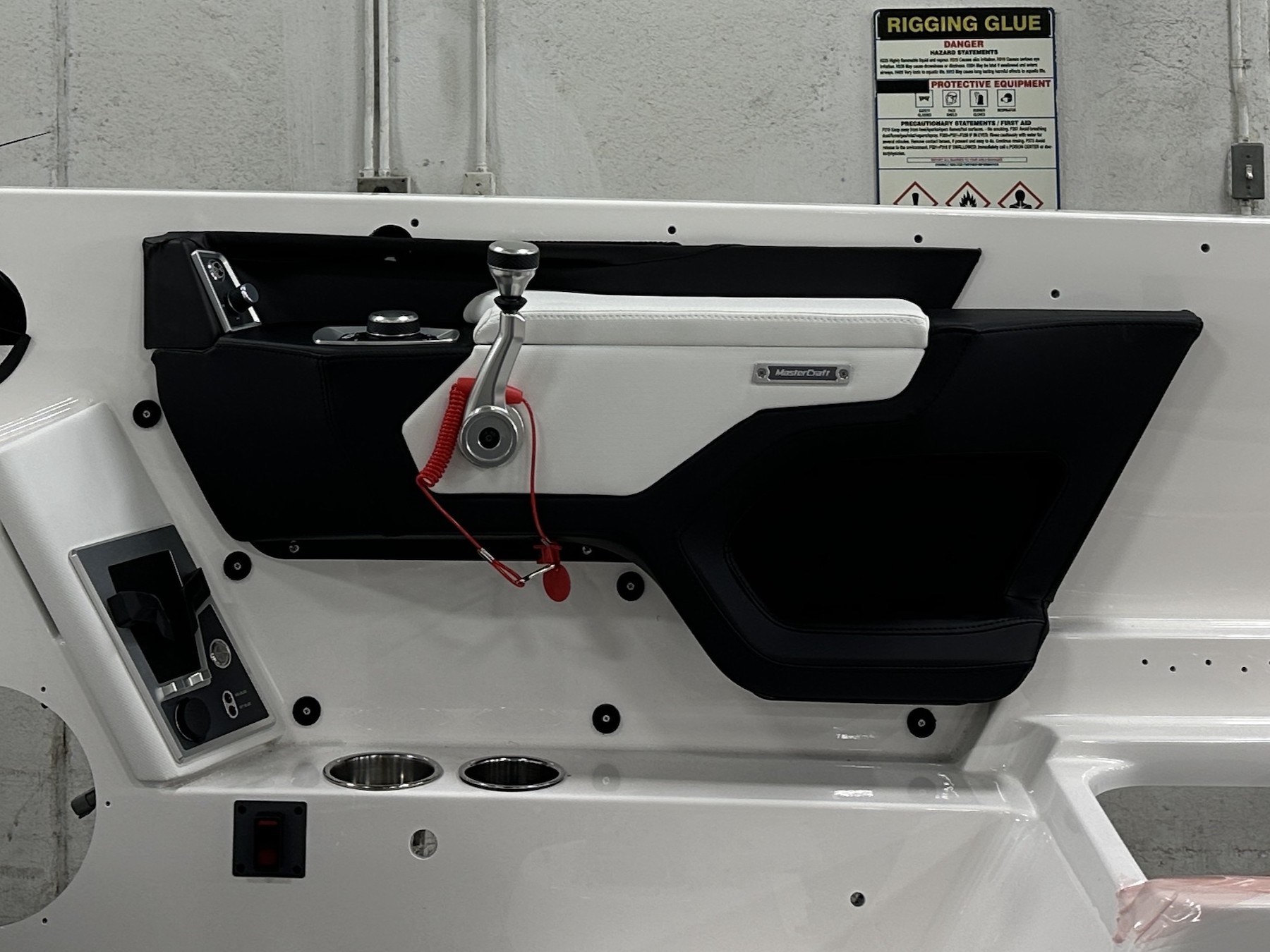
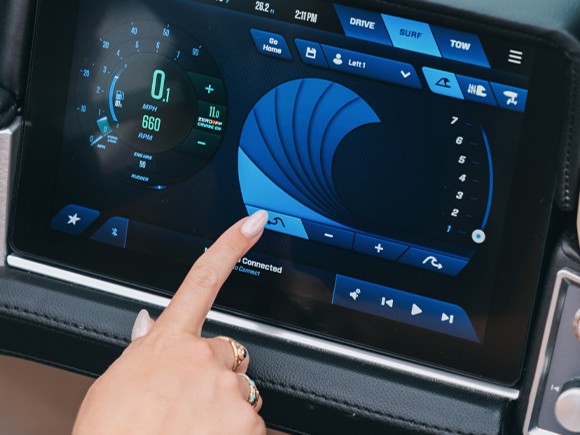
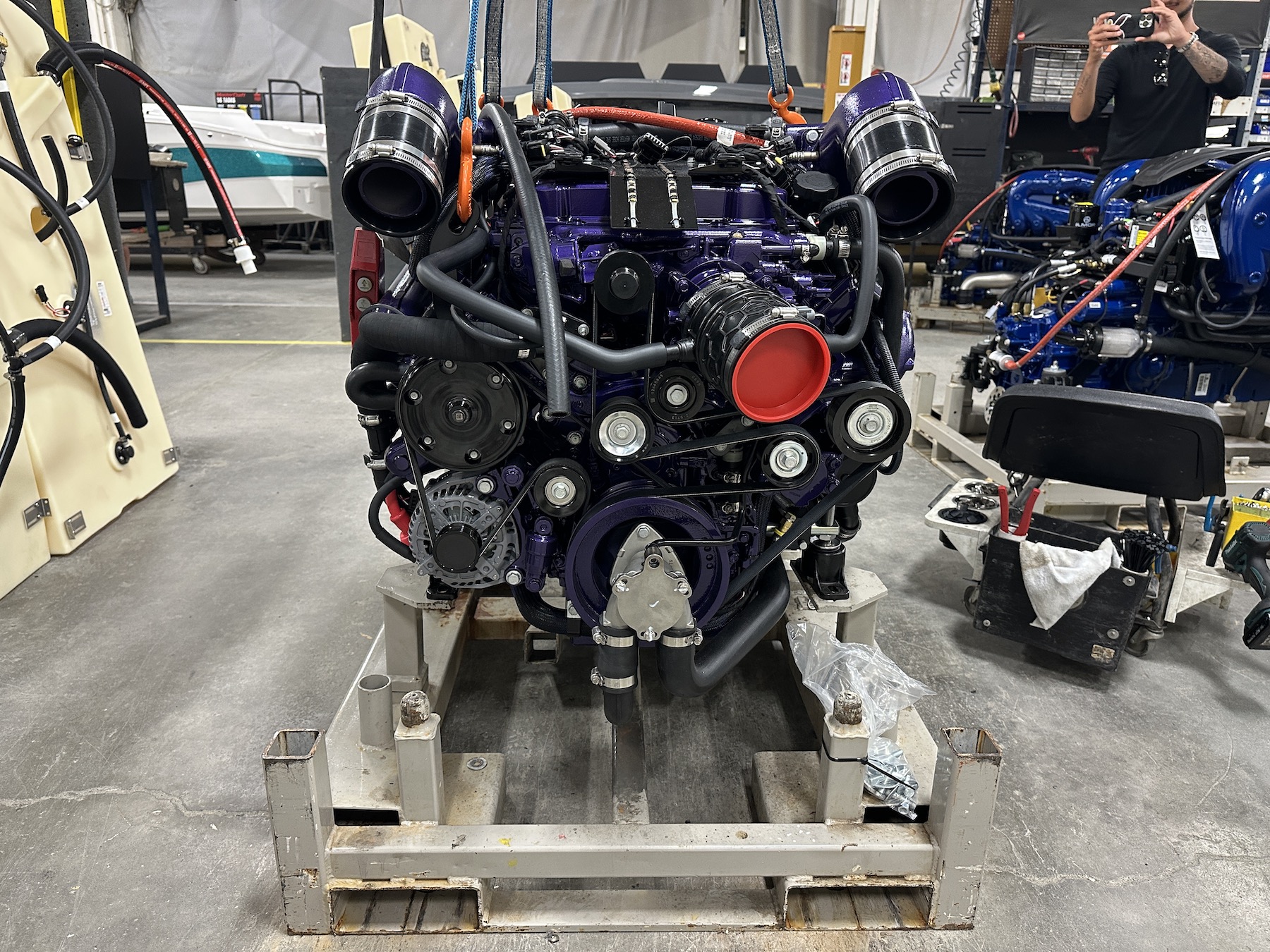
“All of the blow holes are drilled in areas that will be cut out anyway, so there is no risk of gelcoat defect in that area,” engineering manager Kevin Boyer explains.
Through the gelcoat application process, MasterCraft monitors the humidity and temperature, both highly influential factors on how the gelcoat cures. In the past, the company used different blends in the winter and the summer to adjust for the disparity. Now, new climate-controlled booths allow for more consistency. The company is also doing extensive testing and comparing data to perfect how its gelcoats cure.
Chemistry plays an important role at MasterCraft, explains composites engineer Jade Pearson.
“Every gelcoat has a mind of its own with its own viscosity, how well it flows, its cure time,” Pearson says. “We check its properties throughout the process. If it cures too fast, it can fall off the mold, and if it cures too slowly, you can have porosity and other visual defects.”
Same goes for the resin: If it cures too fast before the team finishes working out all of the air, the resulting finish will show defects. As such, the decks and hulls have different processes, so the start times are staggered so they can finish roughly simultaneously. It’s kind of like cooking a Thanksgiving meal: The turkey has to start cooking long before the mashed potatoes, for instance. Coordinating the cure times means everything comes to the table at the same time.
Fiberglass, resin, and puzzle pieces
Workers use fiberglass chop or fiberglass sheets. On the factory floor, they’re infusing the fiberglass with resin and then rolling and compressing it to remove air bubbles on the assembly. Long nozzles shoot out fiberglass, which is then chopped into one-inch pieces; following behind the person wielding the nozzle is someone else with a tool that looks like a paint roller, which blends the resin and fiberglass expertly to remove any surface disruptions. The fiberglass looks like pink cotton candy, but you don’t want to touch it and you definitely don’t want to eat it.
“This is a highly crafted process,” Boyer says. “They might have up to six people rolling out the fiberglass resin to remove any potential defects. Someone else inspects every inch with a special light.”
Decks are assembled upside down, then flipped right-side up to assemble it with the hull. Recesses for the seats are built in, as is a space to drop in a cooler. After the hull and deck are sandwiched together, custom jigs are used for all of the pre-drilled holes.
These reusable pattern pieces are applied by experts who know exactly where they go, fitting each to the boat like a puzzle piece from bow to stern, port and starboard. Different colors are used on the jigs to signify what size drill bit to use so the workers don’t have to squint at fractional numbers on the boat.
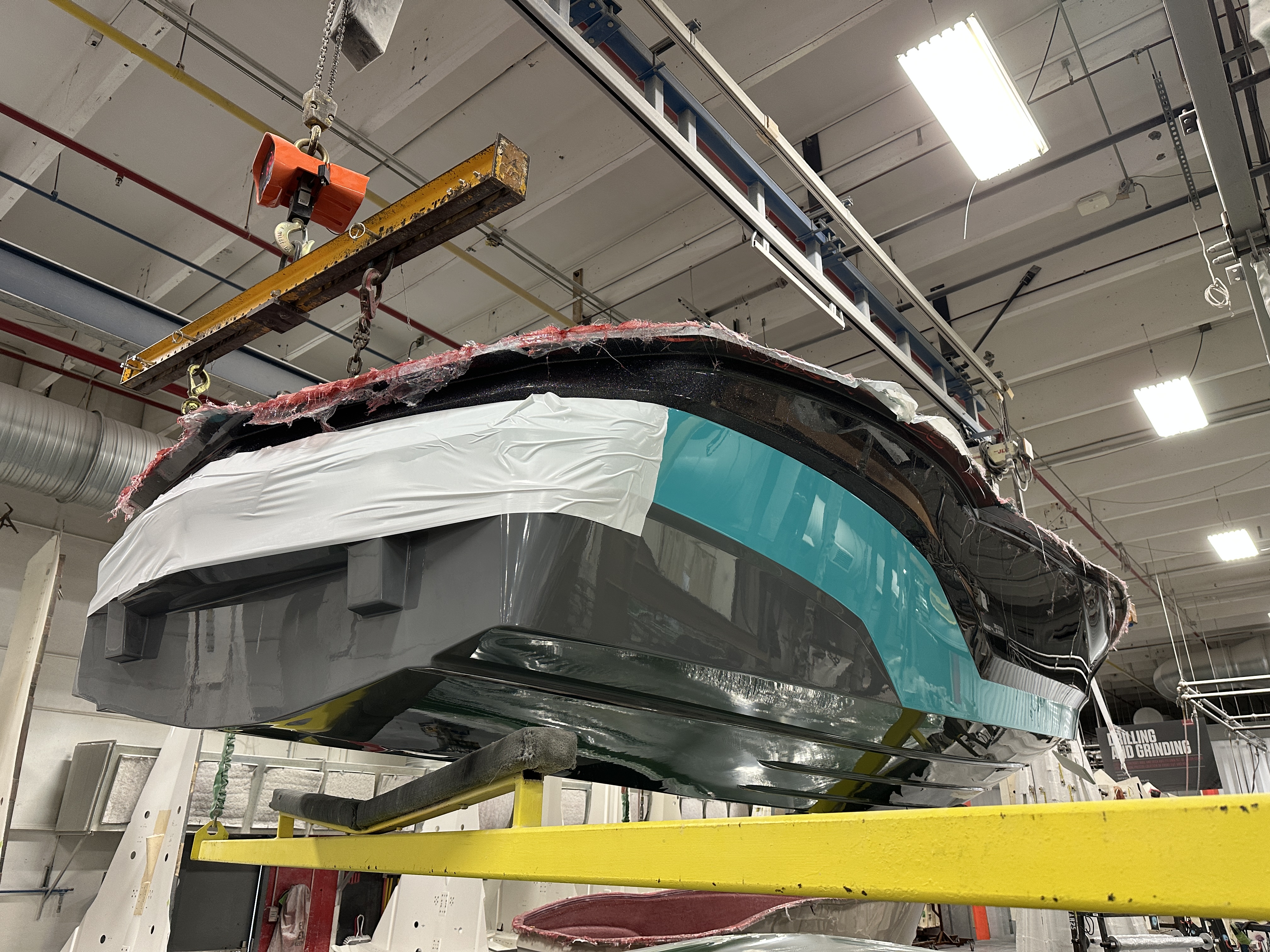
High-tech design behind the scenes
While MasterCraft uses very little robotic assistance on the factory floor, it does employ its fair share of digital simulation tools on the engineering and technology side. The company looks at computational fluid dynamics (CFD), which calculates numerical analysis and algorithms to solve and analyze fluid flow problems.
MasterCraft’s main processing engine is Simerics-MP+for Marine, a 3-D CFD tool that provides virtual testing and can predict the performance of the hull design, friction, wave resistance, effective horsepower, self-propelling acceleration, maneuvering, and more. Paired with the open source screen reader Orca, which acts as a graphical user interface, the MasterCraft engineers get precise feedback throughout the process.
“We’re using CFD more and more for our initial design as well as anything that we see in the field to evaluate the boats,” says Erik Christiansen, MasterCraft’s vice president of engineering. “We historically used tow tanks for scale models, but we’ve moved more into the computational side because it’s a lot quicker to review iterations.”
Creating full-scale model testing within CFD is more applicable than building scale model testing for certain things, like wave shape, Christiansen explains. It also helps to design full-scale prototypes for novel boat designs.
On the back end, however, in-person testing is paramount. Every new model is sent to Florida for off-shore testing to simulate a lifetime of boat ownership, says chief engineer Nick Stinson.
“We gather a data set on how many G-force hits the boat can take,” he says. “We codified all of that and boiled it down to this offshore test; we send someone offshore for a few days, and they’re out there with accelerometers.”
Next time you’re out on the lake for a wakesurfing session, imagine what it’s like to endure a pounding set of waves on the ocean. And be thankful that even if your MasterCraft boat can take such a beating, you don’t have to.
